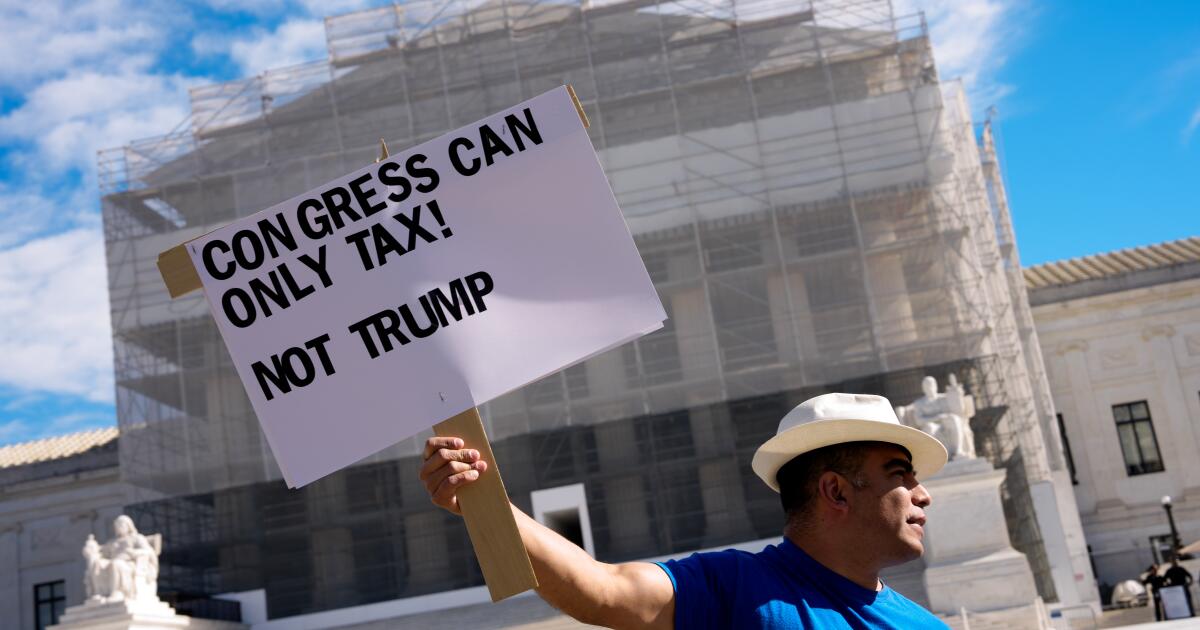Algeria: Ambitious Goals, Investor Skepticism
Africa’s largest country offers opportunity for investors willing to navigate heavy bureaucracy and an unpredictable business environment.
In July, Baladna, a Qatari firm famous for raising cows in the desert, signed a $500 million deal with Algeria’s National Investment Fund to launch the first phase of a $3.5 billion agro-industrial project in the Adrar region. Spanning 117,000 hectares and housing 270,000 cows, the mega-farm aims to cover half of Algeria’s demand for powdered milk and create 5,000 jobs.
The landmark project, held 51% by Baladna and 49% by Algeria’s Ministry of Agriculture, perfectly embodies what Algiers wants: to boost local production with the help of foreign partners while retaining substantial government control over the economy.
With a population exceeding 46 million and roughly a million new births every year, Algeria is one of Africa’s biggest consumer markets—and Africa’s largest country by land area. Investors looking to enter can count on cheap labor, relatively high purchasing power compared to the rest of the continent, low energy costs thanks to state subsidies, and limited competition.
“Just go to any Algerian supermarket and check how many brands of yogurt you will find—there is maybe three,” says Kamel Haddar, an Algerian serial entrepreneur. “In Morocco or Egypt there are 10 times more. So, you’ve got a big market, little competition, low costs … what more do you want? It’s basically like an open bar.”
Over the past decades however, Algeria has struggled to attract overseas capital. A civil war in the 1990s and the restrictive 49/51 ownership law introduced in 2009, which forced foreign investors to take on a local majority partner, have kept many potential investors reluctant to take a chance.
The ownership law was repealed in 2020 (except in “strategic” sectors like hydrocarbon, mining, large transportation infrastructure, pharmaceuticals, and defense) and the government has pledged to open the economy, but FDI remains lower than the authorities might have hoped. According to the International Monetary Fund, inward FDI has averaged just 0.4% of GDP over the past five years.
That leaves Algeria’s economy largely state-led and dependent on hydrocarbons, which made up 92% of exports and half of fiscal revenues last year. Following global energy prices, growth is expected to slow slightly to 3.4% in 2025, down from 3.6% in 2024. State-owned enterprises control key parts of the economy while a sprawling system of subsidies, including for basic goods, housing, and pensions, absorbs the bulk of public spending.
Algeria knows its model is unsustainable. Falling energy prices and mounting fiscal pressure have pushed the authorities to accelerate reforms to diversify the economy and encourage private-sector growth. In 2023, new land and procurement laws were enacted to improve business clarity while a one-stop digital platform for investors that provides key information on how to invest in some sectors and lists the investment incentives, tax exemptions, etc. was launched.
Algiers has set itself ambitious goals: to boost non-hydrocarbon exports to $29 billion by 2030 from $5.1 billion in 2023 while introducing new logistics platforms and simplified trade procedures. The government aims for 30% to 40% of electricity to come from renewables by then as well.
Despite still being subject to the 49/51 law, the energy sector remains the most attractive to foreign investors. US oil majors ExxonMobil and Chevron are reportedly finalizing a major agreement with the Algerian national oil company, Sonatrach, to explore shale gas, potentially unlocking the world’s third largest reserves.
Beyond hydrocarbons, the government is pushing for diversification in agriculture and manufacturing under a “Made in Algeria” policy.
“Everything related to imports is complicated because the state wants to favor products made in Algeria, but for those who produce locally, there are big margins and strong growth ahead,” Haddar says. International names including Coca Cola, Nestlé, Heinz, Pepsico, Danone, Carrefour, Orange, and car makers Renault, Peugeot, and Volkswagen have already established local operations.
“Companies have been setting up for the past 20 years, but it is still not enough,” says Rachid Sekak, financial consultant and former CEO of HSBC Algeria. “The potential for import substitution is everywhere. In terms of consumer goods, a lot remains to be done in sectors like food, agriculture, automobiles.”
| Vital Statistics |
|---|
| Location: North Africa |
| Neighbors: Morocco, Tunisia, Mauritania, Mali, Niger, Libya, Western Sahara |
| Capital City: Algiers |
| Population (2024): 46.8 million |
| Official Languages: Arabic and Tamazight (French is also widely spoken) |
| GDP per capita (2024): $5,631 |
| GDP growth (2024): 4% |
| Unemployment Rate (2024): 11.4% |
| Currency: Algerian dinar |
| Investment promotion agency: Algerian Agency for Investment Promotion (AAPI) |
| Corruption perception index rank (2024): 107th |
| Pros |
|---|
| Dynamic demography |
| Reform plans |
| Tax incentives and subsidies |
| Proximity to Middle East and African markets |
| Little corruption |
| Big opportunities in all sectors of the economy |
| Cons |
|---|
| Heavy state bureaucracy and public sector |
| High level of corruption and arbitrary decisions |
| Economy heavily dependent on energy and exposed to global commodity prices |
| Exposure to climate risks |
| Large informal sector |
| Black market exchange rate |
| Low level of advancement in digitalization |
| On FATF gray list since October 2024 |
Sources: World Bank, IMF, Transparency International
While Europe remains Algeria’s primary trading partner, ties with the Global South are expanding. China is now Algeria’s largest supplier, accounting for 22.9% of imports, and Chinese companies including Huawei, Sinopec, and ZTE have opened shop.
Turkey is another major partner, with more than $21 billion invested across 600 projects. Over 1,700 Turkish companies currently operate in Algeria and bilateral trade between the two countries is expected to reach $10 billion this year. To support the growing business ties, Ziraat Bankasi became the first Turkish bank licensed to operate in Algeria early this year.
Algiers has also joined the African Continental Free Trade Area (AfCFTA); it hosted the Intra-African Trade Fair in September, signalling growing regional ambitions south of the Sahara.
Financial Sector Reform
There is also reform momentum in the financial sector. The establishment of a Startup Ministry and a state-backed venture capital fund in 2020 marked a turning point. The government aims to welcome 20,000 startups by 2030.
“It’s a fast-growing market that is supported by both the state and by the private sector,” Haddar observes, “but we are still at the beginning. The next step will be for international VCs to set up a presence.”
A new Monetary and Banking Law passed in 2023 smooths the way for development of Islamic and digital financial products. Islamic finance currently represents about 3% of total assets, but new entrants including Tunisia’s Bank Zitouna, owned since 2018 by Qatar’s Majda Holding, are expected soon. On the digital front, opportunities are opening for fintechs and online banks, but digital banks face strict conditions. They can only offer payment services, must have a 30% local banking partner, and must require minimum capital of 10 billion dinars ($75 million).
Despite the reforms, public banks still dominate the market, holding about 85% of deposits. Privatization through IPOs has begun, with listings of Banque du Développement Local in March and Crédit Populaire d’Algérie last year, but the process remains mostly symbolic.
“It doesn’t change things fundamentally,” Sekak argues, “because newcomers don’t have the capacity to bend board meeting decisions. It has, however, had important effects on transparency and disclosure.”
From a foreign investor’s perspective, while Algeria seems willing to enact some reforms, deep-rooted barriers persist.
“The potential is huge,” says a foreign investor who has supported multi-million projects in Algeria for over 10 years but is now exiting the market. “There are very few countries like this left in the world. The market is practically virgin and there is a lot of money. But unfortunately, the authorities are not open to business. Big companies have opened—car factories, for example—but sometimes the authorities decide to ban imports of certain raw materials or some spare parts, and that makes local production impossible.”
Investing in Algeria can yield substantial returns, but there are risks. The market is unpredictable, with the authorities often making unliteral decisions that can reshape entire industries overnight.
“Working in Algeria means you must be able go to sleep with one law and wake up with a different one,” the investor says. “So you enter a market that has a certain legal framework, and then things change completely. It’s a big problem you must factor in.”
The IMF echoes these concerns, pointing to a lack of clarity in bidding processes. In its latest review, it suggests, “Addressing issues related to transparency, institutional independence, and enforcement of rules could help improve public trust and institutional effectiveness. Ensuring that legal and regulatory frameworks are applied fairly and efficiently would also support private-sector development, investment, and overall economic resilience.”
Another concern is Algeria’s vast informal sector and cash economy: one of the reasons it landed on the global Financial Action Task Force’s Gray List last year.
While Algeria’s economic potential is significant, its institutions have yet to catch up with its ambitions. The country’s greatest challenge is not capital or capacity, but governance. Until transparency improves, the state further loosens its grip on the economy, and the rules of the road become more stable, investors will continue to face uncertainty.

For More Information on Algeria
Check out our Country Economic Report.

